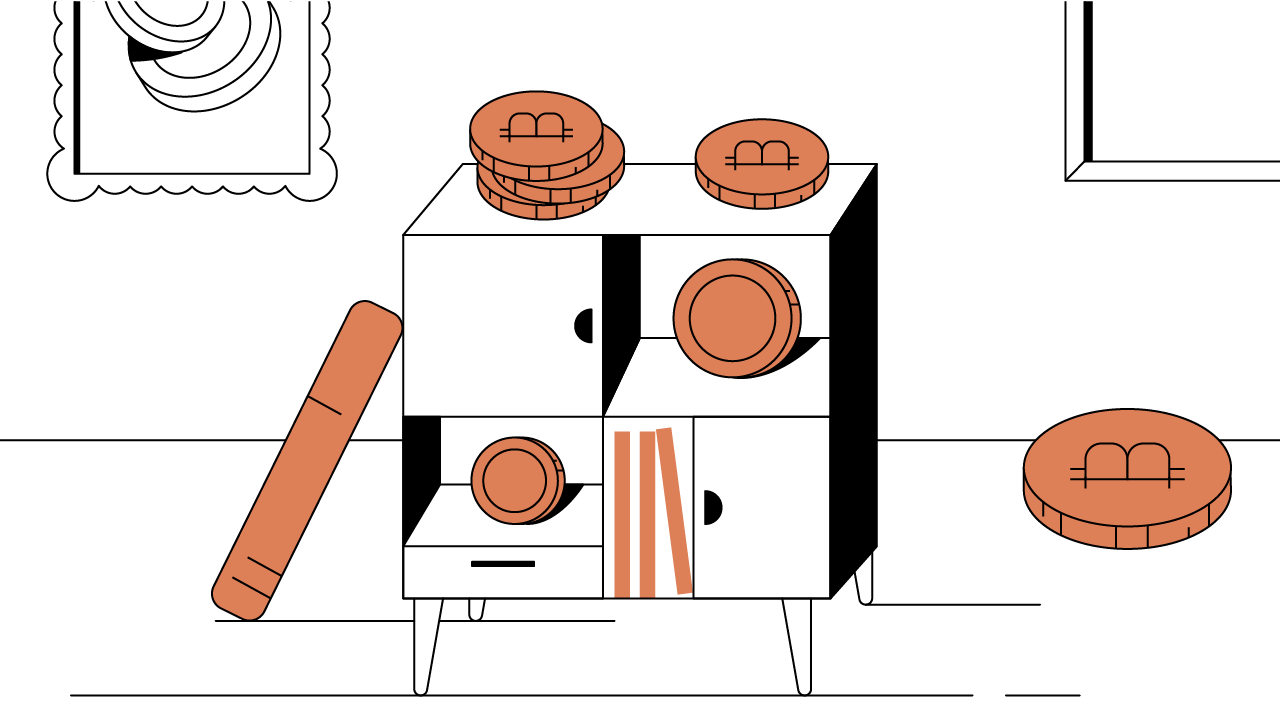Contents
Ethereum Explained: A Guide to the World Supercomputer
Is there anything Ethereum cannot do? Many view the Ethereum platform as a global supercomputer. It’s also been dubbed “the mother of dApps.” Read why here.
Updated June 28, 2022 • 5 min read

Summary
Ethereum has the potential to serve as the framework for a new decentralized Internet. Launched in 2015, the Ethereum blockchain builds on the decentralized and distributed architecture of Bitcoin. However, by introducing smart contracts — which support an ecosystem of decentralized applications (dApps) — Ethereum expands well beyond Bitcoin’s core functionality as a payments platform. The Ethereum platform is open-source, programmable, and censorship-resistant. Because of its open-ended nature, Ethereum has given rise to a broad array of innovation, including Initial Coin Offerings (ICOs), stablecoins, and decentralized finance (DeFi) applications.
What Is Ethereum?
Ethereum was proposed and developed by computer programmer Vitalik Buterin in late 2013. Development of the Ethereum blockchain was financed through an online crowdsale of the network’s cryptocurrency, ether (ETH), that ran from July 2014 to August 2014. This initial round of funding raised more than $18 million USD, and Ethereum was officially launched to the public on July 30, 2015.
Often conceptualized as a worldwide supercomputer, Ethereum provides a flexible and secure platform to build, connect, and monetize an ever-expanding ecosystem of decentralized applications (dApps). As a result, Ethereum now underpins thousands of new applications across a broad range of industries. Ethereum provides a path for legacy industries and governments to more effectively digitize their operations and services by bringing them onto the blockchain.
Inherent to all Ethereum applications are a number of defining characteristics. Ethereum is open-source, meaning anyone can participate in building on the technology as a developer and accessing the technology as a user. The Ethereum protocol does not keep or profit from sensitive user information. While Ethereum’s ledger of transactions is public, transacting parties remain anonymous. Further, Ethereum is censorship-resistant. No central authority controls the blockchain, therefore no one can authorize or deny transactions.
Ethereum vs. Bitcoin
Buterin envisioned Ethereum as a dynamic Swiss-army knife kind of protocol with a broad range of practical applications and a native currency, ether (ETH), or gas, that serves to fuel the network. Ethereum and Bitcoin are similar in the sense that both blockchain protocols currently use a Proof-of-Work (PoW) consensus mechanism to facilitate transactions via a native cryptocurrency. In terms of infrastructure and technology, the two networks have far more commonalities than differences. However, Bitcoin is more limited in its function as a peer-to-peer digital cash system. Ethereum, on the other hand, expands upon Bitcoin’s baseline functionality and utility by using smart contracts, which help to develop and implement complex dApps that can be designed to offer a nearly unlimited range of functions and use cases.
The Difference Maker: Ethereum Smart Contracts
Since inception, Ethereum’s primary differentiator has been its use of smart contracts. Smart contracts are hard-coded, self-executing contracts that facilitate, verify, and enforce unique and specific functions on a blockchain network when conditions specified in those contracts are met. These contracts can be anything from a simple agreement between two parties, such as a straightforward transaction, to a complex network of interconnected smart contracts that interact with each other to form an operational platform. The resulting platforms can be standalone businesses, such as decentralized autonomous organizations (DAOs), or dApps that community members can create, interact with, and modify at will.
Smart contracts deliver automation, transparency, and immutability, thereby providing benefits to both disruptive startups and legacy corporate enterprises looking to build products and services on the blockchain. Smart contracts also allow for the creation of digital assets that are programmable and capable of executing unique and specific functions according to the contract’s code.
Ethereum has given rise to multiple widely used token standards, such as ERC-20 and ERC-721, which are all part of the Ethereum Request for Comments (ERC) family of token standards. These standards are essentially interfaces that indicate that the token’s contract responds to a set of commands specific to a particular smart contract. As a result, token standards determine the nature of a token as well as what network(s) it is compatible with.
Within the Ethereum ecosystem, the most common types of token standards are:
ERC-20: ERC-20 tokens are fungible, meaning they are identical and mutually interchangeable with other tokens of the same type. As a result, ERC-20 tokens are typically used within a currency context or some other commodity use case where token fungibility is required. Most common digital assets in Ethereum’s ecosystem are based on the ERC-20 token standard. At its peak, 94 of the top 100 cryptocurrencies by market cap were based on Ethereum’s ERC-20 token standard.
ERC-621: ERC-621 tokens are similar to ERC-20 tokens except that the ERC-621 token standard allows for the later modification (e.g., minting and burning) of the token’s total supply. In contrast, the ERC-20 standard only allows a single token issuance event.
ERC-827: Another extension of the ERC-20 token standard, ERC-827 allows a token holder to approve a third party to spend or transfer the holder’s tokens based on a pre-established set of rules. This feature opens up new possibilities, like the ability to automate certain operations while remaining ERC-20 compatible.
ERC-721: This standard allows for the creation of non-fungible tokens (NFTs) that are completely unique and not interchangeable with other tokens. As a result, ERC-721 tokens are generally used for collectibles, original artworks, and in other contexts where provable ownership of a digital asset is a priority.
ERC-1155: This standard allows smart contracts to manage multiple token types, allowing for the inclusion of any combination of fungible tokens, non-fungible tokens, and other hybrid configurations.
The above token standards can be used to create tokens that represent a diverse range of both digital and physical assets. They can also be used for network governance and staking, reputation building, and multi-party transaction settlement.
Ethereum’s native ETH coins are used as gas for transactions on the Ethereum network. This means that a small amount of ETH must be spent for every transaction that occurs on the Ethereum network. While ETH is digitally minted — or mined — via a PoW algorithm and can operate as a store of value much like BTC, ETH’s inherent utility is central to the decentralized operations of the Ethereum network.
Ethereum’s dApp Ecosystem
Given Ethereum’s open-ended, open-source nature, anyone with the right knowledge can theoretically build a dApp or web service on the network. As a result, since launching in 2015, Ethereum has become the unifying ecosystem for thousands of unique organizations. Roughly half of all functioning dApps on the market are based on the Ethereum network, with more than 600,000 active users interacting with dApps regularly. Ethereum’s dApps range widely, from decentralized credit services and financial exchanges to blockchain-enabled web browsers and data markets. As of January 2021, more than $22 billion worth of digitized assets were locked up in Ethereum’s rapidly expanding decentralized finance (DeFi) sector.
While some Ethereum dApps may appear similar to traditional web applications from a user perspective, dApps are capable of operating and transacting in a peer-to-peer fashion without the need for a central authority. Since the advent of Ethereum, a number of other blockchain projects focused on smart contract-deployed dApps have sprung up. However, Ethereum continues to be the most widely adopted platform of its kind. And as of January 2021, the Ethereum blockchain remains the second largest, in large part because of the project’s success in attracting developers to build dApps on its network.
Ethereum’s Future
The dApps, DAOs, and DeFi platforms that run on Ethereum require vast amounts of data to be stored on the blockchain, and as a result, Ethereum’s popularity has brought about its own set of challenges. While Ethereum continues to experience heightened interest and demand, the PoW consensus algorithm that undergirds the Ethereum network is increasingly challenged with ever-increasing transaction volumes.
To solve this scalability issue, Ethereum developers are working to replace the current platform with a newly designed Ethereum 2.0 network. Ethereum 2.0 will be rolled out via a multi-stage package of updates called Serenity. After years of development, testing, and speculation, Ethereum 2.0 implementation began with Phase 0 of the Serenity updates and the launch of the Ethereum 2.0 Beacon Chain in December 2020. These updates will transition the network’s smart contract protocols to a more scalable Proof-of-Stake (PoS) consensus algorithm. While this transition is unprecedented in scale and requires developing new technologies in order to work, it is widely considered a necessary step toward making Ethereum a user-friendly, universally accessible supercomputer.
Ethereum’s network is a magnet for innovation and is already making significant progress in restructuring legacy organizations and enabling new, decentralized business models. The network’s flexible programmability has advanced the use cases for blockchain technology far beyond the realm of digital transactions and settlements. Ethereum 2.0 has the potential to bring the concept of a robust, decentralized global supercomputer even closer to fruition. With an extensive community of developers, users, and enterprise partnerships, Ethereum looks to be a strong candidate for actualizing the dream of a highly decentralized internet.
Cryptopedia does not guarantee the reliability of the Site content and shall not be held liable for any errors, omissions, or inaccuracies. The opinions and views expressed in any Cryptopedia article are solely those of the author(s) and do not reflect the opinions of Gemini or its management. The information provided on the Site is for informational purposes only, and it does not constitute an endorsement of any of the products and services discussed or investment, financial, or trading advice. A qualified professional should be consulted prior to making financial decisions. Please visit our Cryptopedia Site Policy to learn more.

Is this article helpful?


